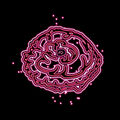Template:Selected anniversaries/February 23: Difference between revisions
No edit summary |
No edit summary |
||
| Line 63: | Line 63: | ||
||2012: David Sayre dies ... physicist and mathematician ... pioneered the development of direct methods for protein crystallography and of diffraction microscopy (also called coherent diffraction imaging), later suggesting the use of electron beam lithography for the fabrication of X-ray Fresnel zone plates. Sayre also helped develop the FORTRAN programming language. Pic search good: https://www.google.com/search?q=david+sayre | ||2012: David Sayre dies ... physicist and mathematician ... pioneered the development of direct methods for protein crystallography and of diffraction microscopy (also called coherent diffraction imaging), later suggesting the use of electron beam lithography for the fabrication of X-ray Fresnel zone plates. Sayre also helped develop the FORTRAN programming language. Pic search good: https://www.google.com/search?q=david+sayre | ||
||2012: 367943 Duende discovered ... a micro-asteroid and a near-Earth object of the Aten and Atira group, approximately 30 meters (98 ft) in diameter. It was discovered by astronomers of the Astronomical Observatory of Mallorca at its robotic La Sagra Observatory in 2012, and named for the duende, a goblin-like creature from Iberian and Filipino mythology and folklore. Duende is likely an uncommon L-type asteroid and significantly elongated. Pic. | ||2012: Asteroid 367943 Duende discovered ... a micro-asteroid and a near-Earth object of the Aten and Atira group, approximately 30 meters (98 ft) in diameter. It was discovered by astronomers of the Astronomical Observatory of Mallorca at its robotic La Sagra Observatory in 2012, and named for the duende, a goblin-like creature from Iberian and Filipino mythology and folklore. Duende is likely an uncommon L-type asteroid and significantly elongated. Pic. | ||
File:Crimson Blossom 2.jpg|link=Crimson Blossom 2 (nonfiction)|2017: Chromatographic analysis of ''[[Crimson Blossom 2 (nonfiction)|Crimson Blossom 2]]'' reveals previously unknown [[Color (nonfiction)|color]] which is "midway between [[Red (nonfiction)|red]] and [[Violet (nonfiction)|violet]]." | File:Crimson Blossom 2.jpg|link=Crimson Blossom 2 (nonfiction)|2017: Chromatographic analysis of ''[[Crimson Blossom 2 (nonfiction)|Crimson Blossom 2]]'' reveals previously unknown [[Color (nonfiction)|color]] which is "midway between [[Red (nonfiction)|red]] and [[Violet (nonfiction)|violet]]." | ||
</gallery> | </gallery> | ||
Revision as of 16:29, 9 March 2019
1580: Physician, occultist, and Gnomon algorithm theorist Johann Weyer publicly accuses the House of Malevecchio of secretly distributing clandestiphrine and other illegal drugs.
1583: Mathematician, astrologer, and astronomer Jean-Baptiste Morin born.
1742: Physicist and academic Laura Bassi uses Gnomon algorithm functions to translate Newton's ideas of physics and natural philosophy into Italian.
1855: Mathematician, astronomer, and physicist Carl Friedrich Gauss dies. He had an exceptional influence in many fields of mathematics and science and is ranked as one of history's most influential mathematicians.
1898: Émile Zola is imprisoned in France after writing "J'accuse", a letter accusing the French government of antisemitism and wrongfully imprisoning Captain Alfred Dreyfus.
1927: German theoretical physicist Werner Heisenberg writes a letter to fellow physicist Wolfgang Pauli, in which he describes his uncertainty principle for the first time.
1940: ENIAC program accidentally generates new class of crimes against mathematical constants.
1941: Plutonium is first produced and isolated by Dr. Glenn T. Seaborg.
1963: Mathematician, information engineer, and crime-fighter Claude Shannon publishes new theory of entropy which reveals new approaches to the detection and prevent of crimes against mathematical constants.
2017: Chromatographic analysis of Crimson Blossom 2 reveals previously unknown color which is "midway between red and violet."










